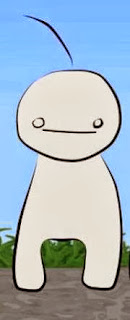Color Theory
Worksheet
Please read
the materials listed below and answer the following questions:
• Color Theory Intro:
http://www.nhsdesigns.com/graphic/color/index.php
• Color Wheel:
http://www.nhsdesigns.com/graphic/color/color-wheel.php
• Color Combinations:
http://www.nhsdesigns.com/graphic/color/color-combos.php
• Tints, Shades & Neutrals:
http://www.nhsdesigns.com/graphic/color/tints_shades_neutrals.php
• Emotional Content:
http://www.nhsdesigns.com/graphic/color/emotional-content.php
• Color Meaning:
http://www.color-wheel-pro.com/color-meaning.html
• Color Physiology:
http://www.webdesign.org/web-design-basics/color-theory/color-psychology-quick-reference-cards.13826.html
Please type
out answers in complete sentences. You
may paraphrase. Please do NOT copy and
paste definitions.
1. Define hue: Hue is what tells one color
apart from another.
2. Define value: Value is the lightness or
darkness of a color. It is also called tone.
3. Define saturation: Saturation is the
brightness of a color. It is also known as Chroma.
4. How many colors are available on our
computers? There are millions of colors.
5. Define secondary color: Secondary
colors are two primary colors mixed together.
6. Define tertiary color: Tertiary colors
are a primary and a color right next to it together.
7. Define complementary colors: They are 2
colors that are opposite of each other.
8. What are the primary colors in
Photoshop? They are red, green, and blue.
9. What are the secondary colors in
Photoshop? They are cyan, magenta, and yellow.
10. Define subtractive color model: This is
where you mix the primary colors of photoshop together.
11. Define additive color model: This is
where you mix the primary colors of a normal color wheel together.
12. Is RGB additive or subtractive? It is
additive.
13. Is CMYK additive or subtractive? It is
subtractive.
14. What is the RGB color model used for? It
is used for the way light mixes on a computer screen.
15. What is the CMYK color model used for? It
is used for printing.
16. Define analogous colors: They are colors
that sit next to each other.
17. Define tint: Tint is where white is added
to a color.
18. Define shade: Shade is where black is
added to a color.
19. Define neutral: Neutral is a combination
is complementary colors.
20. What can be said in general about warm
colors? They tend to pop out of a design.
21. What can be said in general about cool
colors? They tend to recede in a design.
22. What color is associated with stability?
Purple and Blue are colors of stability.
23. What color symbolizes royalty? Purple is
also associated with royalty.
24. What is the color of cleanliness? Blue
and white are colors of cleanliness.
25. What color symbolizes freshness? Green
symbolizes freshness.
26. Which colors are associated with joy?
Yellow and orange are associated with joy.
27. What color symbolizes passion and danger?
Red symbolizes passion and danger.
28. Dark red is associated with: It is
associated with vigor, willpower, rage, anger, leadership,courage, longing,
malice, and wrath.
29. Reddish-brown is associated with: It is
associated with harvest and fall.
30. Dark orange is associated with: It is
associated with deceit and distrust.
31. Gold is associated with: Gold means
prestige, wisdom, and wealth.
32. Yellow is associated with: Yellow means
joy, happiness, and energy.
33. Dark green is associated with: It is
associated with ambition, greed, and jealousy.
34. Olive green is associated with: Olive
green means peace.
35. Light blue is associated with: Light blue
means health, healing, tranquility, and softness.
36. Dark purple is associated with: It can
mean gloom and sad feelings. It can also mean frustration.
37. Why is the use of color important in
graphic Design? It is important because it sets a mood for your advertisement
or art work. Using the right colors for and advertisement is important because
you want the viewers to feel the right emotions towards your project or idea.









